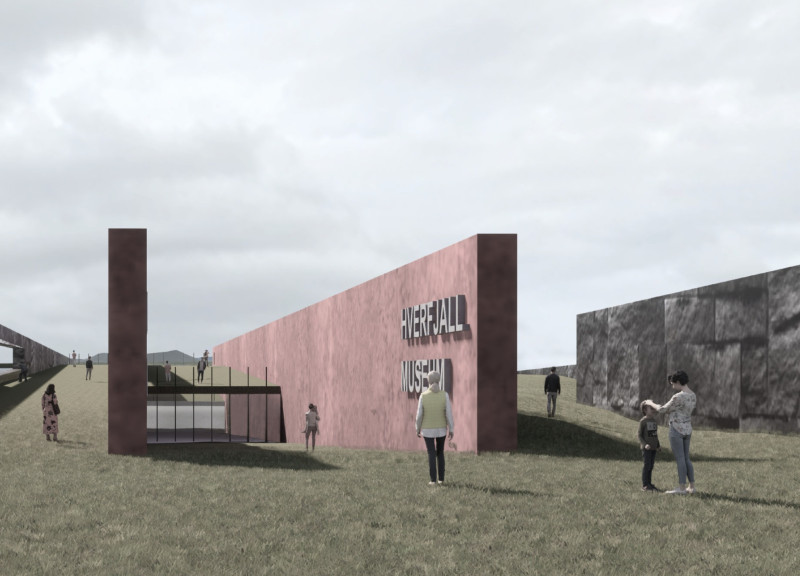5 key facts about this project
The Hverfjall Museum is located in Iceland, surrounded by the natural landscape of the Hverfjall volcano. The building serves various purposes, including a museum and a visitor center. The design aims to enhance the experience of visitors by connecting architecture with the geological features of the area. By framing important views of the volcano, the museum encourages exploration and appreciation of its striking environment.
Architectural Concept
The design centers on establishing a connection to the specific location of Hverfjall. The walls are built primarily from basalt, reflecting the volcanic nature of the area. This choice of material emphasizes the geological history and provides a clear relationship between the building and the land. The architecture allows visitors to engage with their surroundings while showcasing the beauty of the natural landscape.
Building Layout
Visitors approach the museum through a gently sloping entrance that guides them from the outside into a communal café area before leading down to the exhibition spaces below. This arrangement encourages a gradual shift from the open landscape into the more refined internal spaces. The layout enhances the experience of moving through the environment, allowing visitors to feel more connected to the volcanic context at each step.
Material Interaction
The museum’s design incorporates both basalt and Corten steel, using the two materials to create a contrast while establishing a connection with the surroundings. The coarse texture of the basalt mirrors the geological character, while the Corten steel brings a modern element into the mix. This thoughtful use of materials highlights the dialogue between the built environment and the natural world, reinforcing the narrative of the volcanic landscape.
View Framing
Framing the views of Hverfjall is a crucial aspect of the design. The architectural fins are positioned to direct visitors’ attention toward the volcano, allowing for a variety of perspectives as they navigate through the museum. The careful orientation of the building ensures that the surrounding landscape is always visible, making it a central focus throughout the visitor experience.
The Hverfjall Museum exemplifies how careful design can integrate structure with nature. The interplay of materials and thoughtful layout cultivates a space where visitors can fully appreciate the beauty and significance of the Hverfjall volcano and its surroundings. Each architectural element contributes to a coherent narrative that reflects the relationship between the museum and its unique geological context.






















































